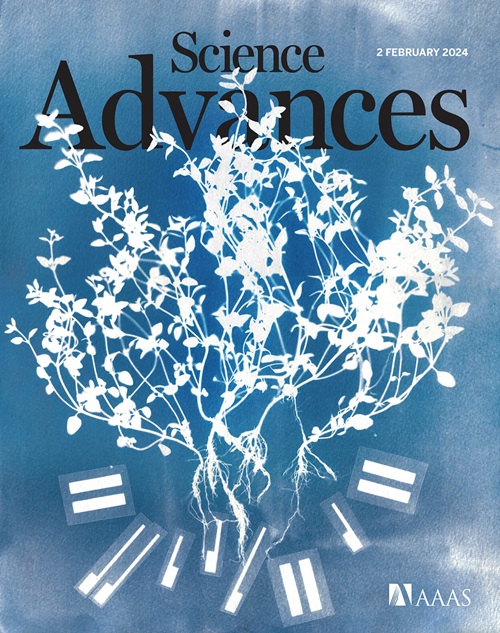Highly efficient, selective, and stable photocatalytic methane coupling to ethane enabled by lattice oxygen looping
IF 11.7
1区 综合性期刊
Q1 MULTIDISCIPLINARY SCIENCES
引用次数: 0
Abstract
Light-driven oxidative coupling of methane (OCM) for multi-carbon (C2+) product evolution is a promising approach toward the sustainable production of value-added chemicals, yet remains challenging due to its low intrinsic activity. Here, we demonstrate the integration of bismuth oxide (BiOx) and gold (Au) on titanium dioxide (TiO2) substrate to achieve a high conversion rate, product selectivity, and catalytic durability toward photocatalytic OCM through rational catalytic site engineering. Mechanistic investigations reveal that the lattice oxygen in BiOx is effectively activated as the localized oxidant to promote methane dissociation, while Au governs the methyl transfer to avoid undesirable overoxidation and promote carbon─carbon coupling. The optimal Au/BiOx-TiO2 hybrid delivers a conversion rate of 20.8 millimoles per gram per hour with C2+ product selectivity high to 97% in the flow reactor. More specifically, the veritable participation of lattice oxygen during OCM is chemically looped by introduced dioxygen via the Mars-van Krevelen mechanism, endowing superior catalyst stability.

通过晶格氧循环实现甲烷与乙烷的高效、选择性和稳定的光催化耦合
光驱动甲烷氧化偶联(OCM)以实现多碳(C 2+ )产品的进化是实现高附加值化学品可持续生产的一种前景广阔的方法,但由于其内在活性较低,因此仍具有挑战性。在此,我们展示了在二氧化钛(TiO 2)基底上整合氧化铋(BiO x)和金(Au)的方法,通过合理的催化位点工程实现了光催化 OCM 的高转化率、产品选择性和催化耐久性。机理研究表明,BiO x 中的晶格氧作为局部氧化剂被有效激活,以促进甲烷解离,而 Au 则控制甲基转移,以避免不良的过氧化反应并促进碳-碳耦合。最佳的金/BiO x -TiO 2 混合物在流动反应器中的转化率为 20.8 毫摩尔/克/小时,C 2+ 产物选择性高达 97%。更具体地说,在 OCM 过程中,晶格氧的真正参与是通过 Mars-van Krevelen 机制引入二氧进行化学循环,从而赋予催化剂卓越的稳定性。
本文章由计算机程序翻译,如有差异,请以英文原文为准。
求助全文
约1分钟内获得全文
求助全文
来源期刊

Science Advances
综合性期刊-综合性期刊
CiteScore
21.40
自引率
1.50%
发文量
1937
审稿时长
29 weeks
期刊介绍:
Science Advances, an open-access journal by AAAS, publishes impactful research in diverse scientific areas. It aims for fair, fast, and expert peer review, providing freely accessible research to readers. Led by distinguished scientists, the journal supports AAAS's mission by extending Science magazine's capacity to identify and promote significant advances. Evolving digital publishing technologies play a crucial role in advancing AAAS's global mission for science communication and benefitting humankind.
 求助内容:
求助内容: 应助结果提醒方式:
应助结果提醒方式:


